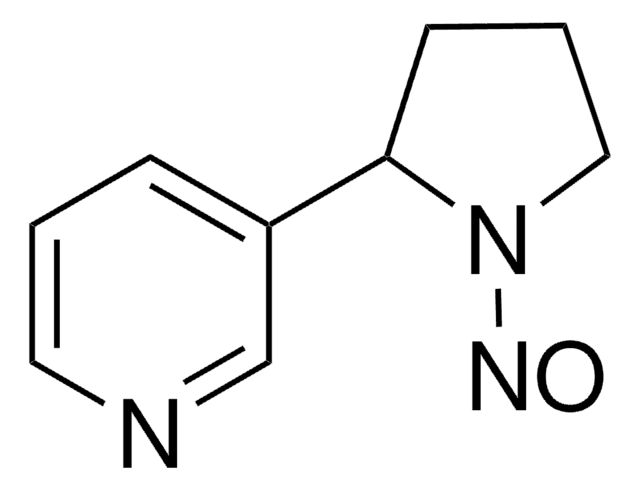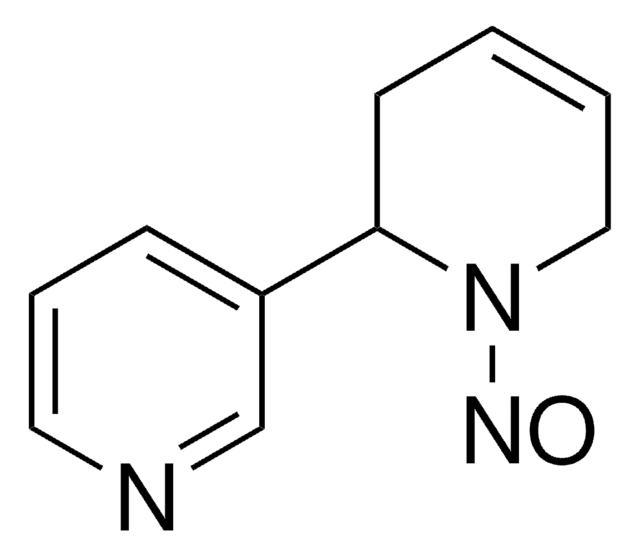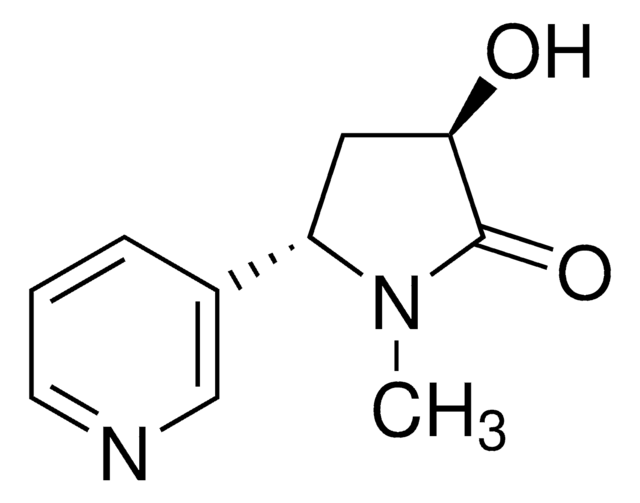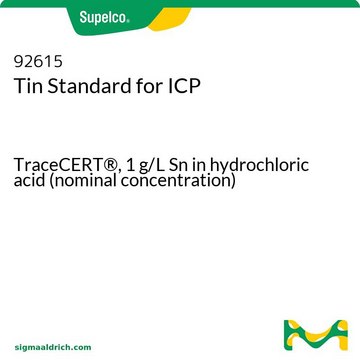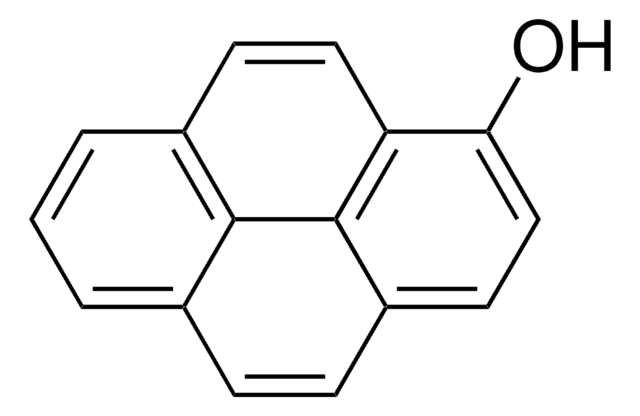59773
4-(Methylnitrosamino)-1-(3-pyridyl)-1-butanol
analytical standard
Sinónimos:
NNAL
About This Item
Productos recomendados
grado
analytical standard
Nivel de calidad
Ensayo
≥92.0% (TLC)
caducidad
limited shelf life, expiry date on the label
técnicas
HPLC: suitable
gas chromatography (GC): suitable
solid phase extraction (SPE): suitable
aplicaciones
cleaning products
cosmetics
food and beverages
personal care
Formato
neat
temp. de almacenamiento
2-8°C
cadena SMILES
CN(N=O)CCCC(O)C1=CN=CC=C1
InChI
1S/C10H15N3O2/c1-13(12-15)7-3-5-10(14)9-4-2-6-11-8-9/h2,4,6,8,10,14H,3,5,7H2,1H3
Clave InChI
OGRXKBUCZFFSTL-UHFFFAOYSA-N
Descripción general
Aplicación
Código de clase de almacenamiento
11 - Combustible Solids
Clase de riesgo para el agua (WGK)
WGK 3
Punto de inflamabilidad (°F)
Not applicable
Punto de inflamabilidad (°C)
Not applicable
Equipo de protección personal
Eyeshields, Gloves, type N95 (US)
Elija entre una de las versiones más recientes:
¿Ya tiene este producto?
Encuentre la documentación para los productos que ha comprado recientemente en la Biblioteca de documentos.
Los clientes también vieron
Nuestro equipo de científicos tiene experiencia en todas las áreas de investigación: Ciencias de la vida, Ciencia de los materiales, Síntesis química, Cromatografía, Analítica y muchas otras.
Póngase en contacto con el Servicio técnico
